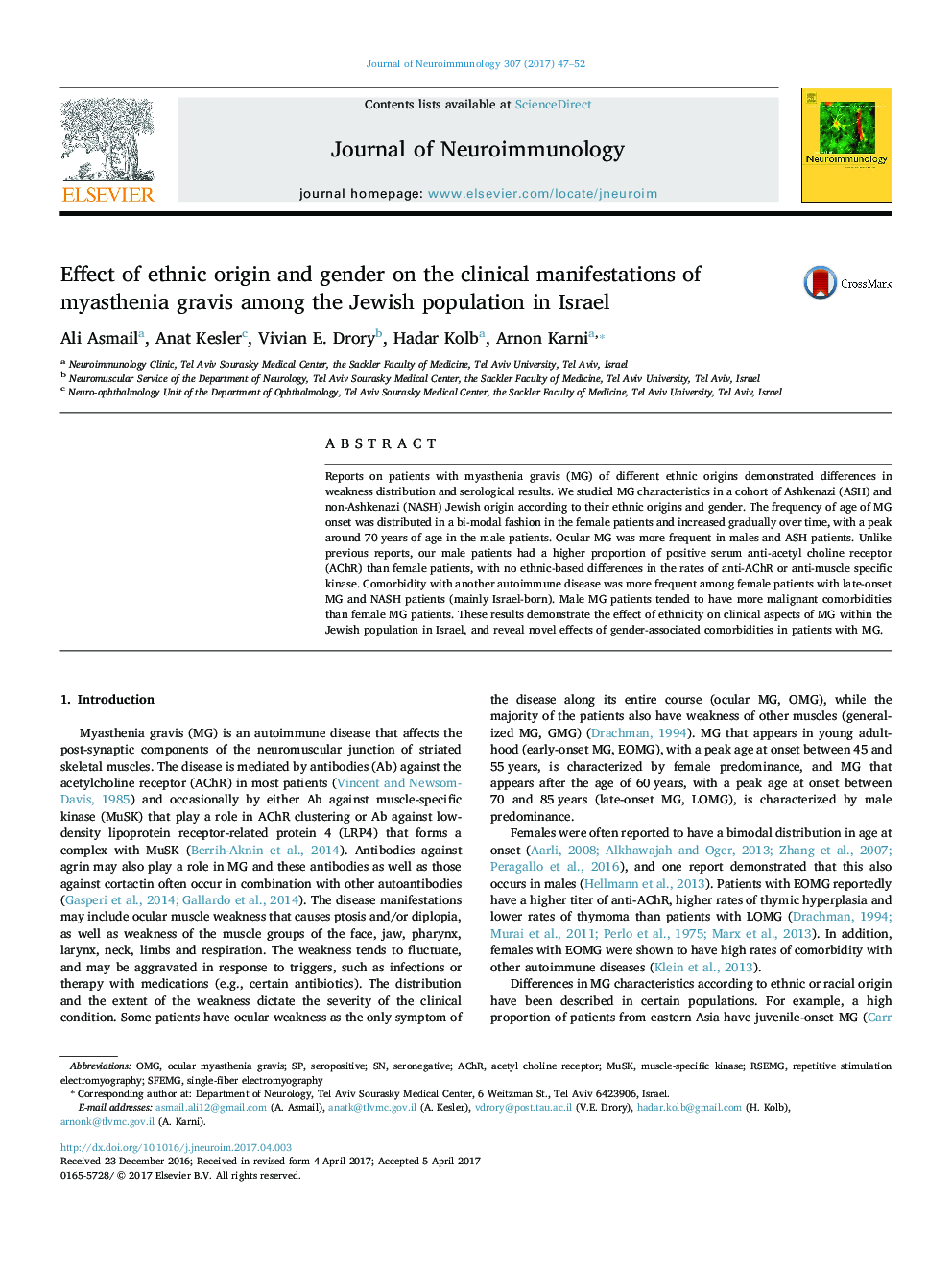| Article ID | Journal | Published Year | Pages | File Type |
|---|---|---|---|---|
| 5630337 | Journal of Neuroimmunology | 2017 | 6 Pages |
â¢Ocular MG was more frequent in males and Ashkenazi patients.â¢Male patients had a higher proportion of positive serum anti-acetyl choline receptor (AChR) than female patientsâ¢Comorbidity with another autoimmune disease was more frequent in female patients with LOMG and in non-Ashkenazi patientsâ¢Male MG patients tended to have more malignant comorbidities than female patients.â¢There is an effect of ethnicity on clinical aspects of MG within the Jewish population
Reports on patients with myasthenia gravis (MG) of different ethnic origins demonstrated differences in weakness distribution and serological results. We studied MG characteristics in a cohort of Ashkenazi (ASH) and non-Ashkenazi (NASH) Jewish origin according to their ethnic origins and gender. The frequency of age of MG onset was distributed in a bi-modal fashion in the female patients and increased gradually over time, with a peak around 70Â years of age in the male patients. Ocular MG was more frequent in males and ASH patients. Unlike previous reports, our male patients had a higher proportion of positive serum anti-acetyl choline receptor (AChR) than female patients, with no ethnic-based differences in the rates of anti-AChR or anti-muscle specific kinase. Comorbidity with another autoimmune disease was more frequent among female patients with late-onset MG and NASH patients (mainly Israel-born). Male MG patients tended to have more malignant comorbidities than female MG patients. These results demonstrate the effect of ethnicity on clinical aspects of MG within the Jewish population in Israel, and reveal novel effects of gender-associated comorbidities in patients with MG.
Graphical abstractDownload high-res image (127KB)Download full-size image
